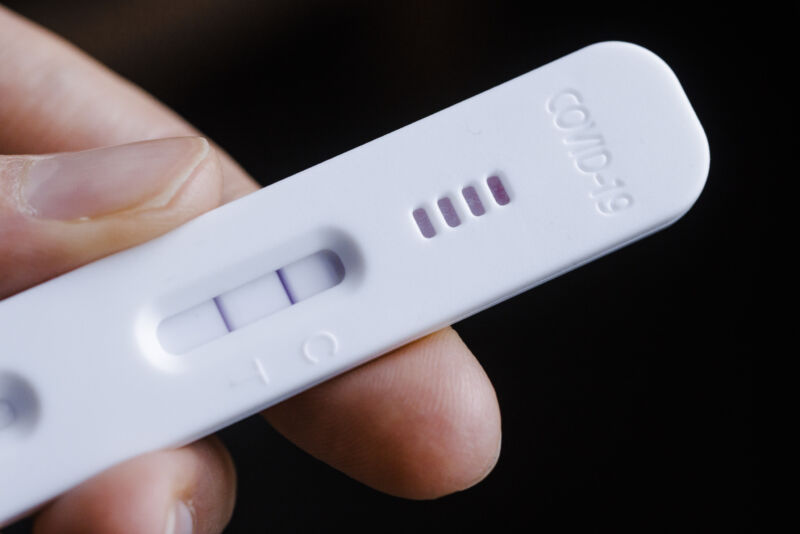SCIENCE - Un “au revoir” de 62 pages. Le conseil scientifique mis en place en mars 2020 aux premiers cas de Covid-19 vient de dévoiler son dernier avis ce mercredi 20 juillet sur la pandémie de
coronavirus
, intitulé “vivre avec les variants”. Le
rapport
rédigé par les 16 scientifiques a été remis au gouvernement la veille à 13 heures.
Après un avant-propos rappelant le travail effectué (300 réunions en un peu plus de deux ans), les chercheurs font le point sur la situation actuelle et sur l’avenir du virus en France.
Après avoir analysé la situation et notamment le pic de la 7e
vague
du variant BA.5 qui semble poindre, le
Conseil scientifique
se veut plutôt fataliste: au vu de son implantation mondiale, le coronavirus ne va pas disparaître et de nouvelles vagues vont avoir lieu plus ou moins régulièrement, souvent portées par de nouveaux variants.
La bonne nouvelle, c’est que les données actuelles semblent montrer que l’immunité contre les formes graves après une triple vaccination reste efficace et stable dans le temps. Sauf pour les personnes âgées et chez ceux ayant des facteurs de risque, qui auront besoin de rappels réguliers.
“Ce contexte suggère que l’impact du SARS-CoV-2 va diminuer progressivement, mais ne présage pas d’une absence de pics de circulation des virus à court terme”, note le
Conseil scientifique
, qui a ensuite imaginé à court terme trois scénarios pour l’automne 2022. Ainsi que trois réponses possibles, où la question du port du masque est très présente.
Du “variant X” jusqu’au retour d’Omicron
Le futur le plus incertain se trouve dans le scénario 3, dans lequel “l’émergence d’un variant X doté d’une capacité d’échappement immunitaire et d’une contagiosité suffisante pour être responsable d’une nouvelle vague épidémique” apparaîtrait.
En clair, cela voudrait dire qu’apparaîtrait un nouveau variant très différent des différents lignages d’Omicron qui ont déjà touché la France (BA.1, BA.2, BA.5). Un scénario avec une “probabilité relativement élevée” à l’avenir très incertain. “La sévérité des manifestations cliniques associées à ce nouveau variant est imprévisible, et peut aller vers une moindre ou une plus grande sévérité”, note le Conseil scientifique.
Le scénario 2, lui, est le plus optimiste. Dans celui-ci, aucun nouveau variant très différent n’émerge. Mais cela ne veut pas dire qu’il n’y aura pas de vague hivernale. En effet, une reprise épidémique est “attendue du fait de la baisse de l’immunité populationnelle avec le temps et de la plus grande transmissibilité des coronavirus en saison froide”, rappelle le Conseil scientifique.
Dans de telles conditions, “on peut espérer que le retentissement hospitalier associé à cette reprise d’un variant déjà connu sera gérable”, car notre système immunitaire sera bien entraîné.
Le risque d’un variant de seconde génération
Reste enfin le scénario 1, qui fait écho à ce que nous vivons actuellement avec le variant BA.5: “Une succession de vagues épidémiques liées à l’émergence de sous-variants d’Omicron, avec un retentissement hospitalier moins important comparé à celui des vagues liées aux VOC (variants concernants dont beta, delta,
NDLR
) du début de la pandémie”.
On est ici dans un entre deux, car on parle de variants relativement proches d’Omicron, qui seraient soient des cousins de ceux déjà connus, ou bien des descendants de ceux-ci. “Le sous-variant actuellement source d’inquiétude est le BA.2.75 apparu en Inde, avec un avantage de transmissibilité par rapport au variant BA.2 déjà présent dans ce pays”, précise l’avis.
Comme nous le précisions dans notre
article consacré à BA.2.75
, nous avons ici affaire à une version du coronavirus qui descend de BA.2, mais avec de très nombreuses mutations. Il est trop tôt pour dire s’il a suffisamment d’avantages pour s’imposer et provoquer une vague plus importante. Mais la bonne nouvelle, c’est que son profil étant tout de même proche d’Omicron, le risque de formes graves ne devrait pas fondamentalement changer, nous expliquait Étienne Simon-Lorière, responsable de l’unité Génomique évolutive des virus à ARN à l’Institut Pasteur.
La question du retour du masque et des restrictions
Une fois ce constat posé, l’avis va plus loin en proposant trois options pour répondre à cette très probable nouvelle vague automnale. La question qui se pose, c’est de savoir à quel moment de possibles mesures de restrictions contraignantes devront être mises en place pour limiter la circulation du coronavirus.
Les trois dernières vagues de 2022 ont atteint leur pic sans l’aide de mesures visant à diminuer la propagation du virus et sans que le système de santé soit submergé. Si le critère hospitalier reste le seul qui importe, cela voudrait dire qu’il faudra tolérer “un niveau élevé de circulation du virus lors des vagues épidémiques, dès lors que les personnes à risque de formes graves sont protégées par la primovaccination et des rappels répétés”, précise le Conseil scientifique.
Une option qui est “privilégiée, même tacitement, si des mesures obligatoires de protection, de type port du masque obligatoire dans certains lieux, ne sont pas proposées par les autorités et sont peu acceptées par la population”, notent les chercheurs.
La seconde option est celle “privilégiée par le Conseil scientifique COVID-19”. En plus de la saturation hospitalière, les auteurs proposent d’apprécier plus globalement “l’impact sanitaire (morbidité, mortalité, hôpital) ainsi que de l’impact économique (absentéisme au travail)”.
Dans cette option, des mesures de contrôle, comme “l’obligation du port du masque dans certains lieux” doit être décidée pour diminuer la taille du pic épidémique et protéger les plus fragiles, même si l’hôpital tient le choc. Les experts en profitent pour rappeler que fin juin, 71% des Français se déclaraient favorables au retour du masque dans les transports.
Assainir l’air pour lutter efficacement contre le Covid-19
La dernière option s’apparente aux stratégies de type “Zéro Covid”, avec l’idée de contrôler au maximum l’épidémie, notamment via le port du masque généralisé, le traçage des contacts et l’isolement strict des cas ainsi que des contrôles aux frontières. Mais le Conseil scientifique rappelle que les pays ayant suivi cette stratégie avec succès ont finalement dû faire face à une vague importante avec l’arrivée des variants Omicron (sauf pour le Japon).
Enfin, les chercheurs appellent surtout à préparer l’avenir. Amélioration du dépistage, amélioration des vaccins, séquençage des variants plus réactif via l’analyse des eaux usées... et, surtout, amélioration de la qualité de l’air. “Sur le plus long terme, il est important d’investir dès maintenant dans d’autres types de mesures innovantes, notamment des mesures permettant d’améliorer de façon pérenne la qualité de l’air intérieur”.
Le Conseil scientifique recommande donc au gouvernement “des investissements plus conséquents visant à améliorer la qualité de l’air intérieur par une meilleure ventilation des bâtiments”.
Un combat nécessaire, mais encore peu développé
.
À voir également sur
Le HuffPost
:
Pourquoi la vaccination des plus de 60 n’a rien de superflu
 chevron_right
chevron_right




 Dans son dernier avis, le Conseil scientifique Covid-19 imagine 3 scénarios pour la suite de l'épidémie de coronavirus cet automne.
Dans son dernier avis, le Conseil scientifique Covid-19 imagine 3 scénarios pour la suite de l'épidémie de coronavirus cet automne.






